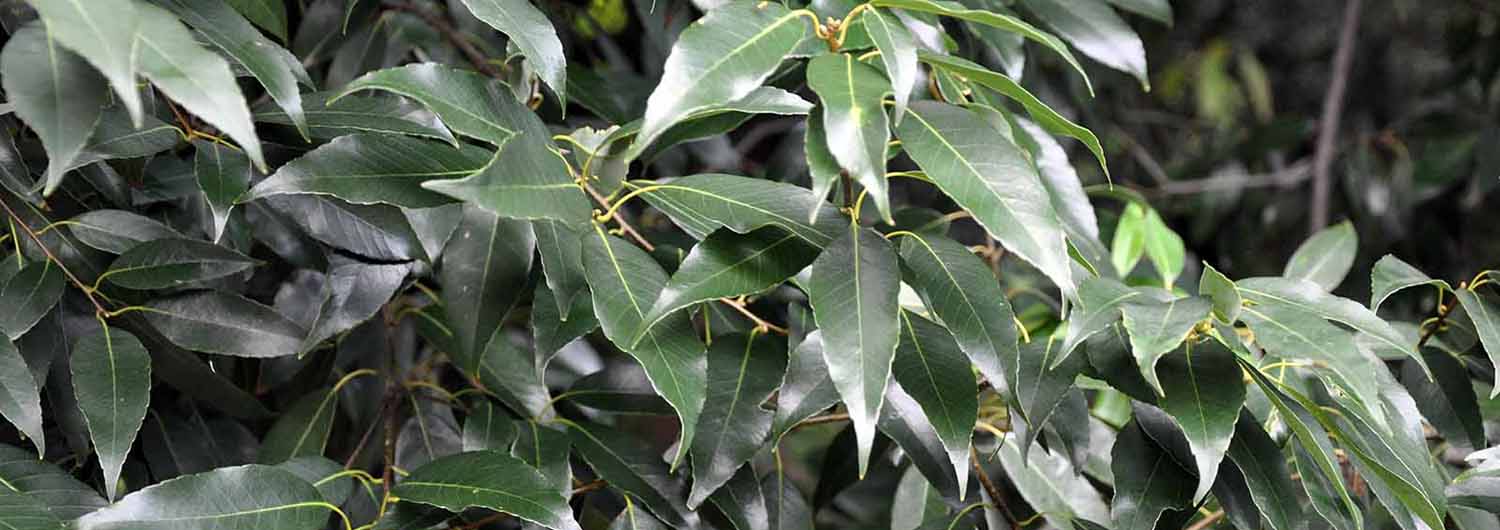Quercus
As summer really starts sizzling, getting out in the garden seems to get more and more difficult and shade becomes a precious commodity. A few well placed trees can make all the difference in the world when strategically placed to block the harsh afternoon sun from a deck or just situated to allow some gardening without the harsh glare beating down. Among the best of shade trees are oaks, the genus Quercus.
Oaks have been an important component of the collections of the JCRA since its inception. The first plant installed by J. C. Raulston when establishing the Arboretum was the columnar English oak, Quercus robur f. fastigiata, a farewell gift from his colleagues at Texas A&M University. In recent years, evergreen and semi-evergreen species have gradually been accumulated through wild collections and from cultivated material to add to the existing specimens that predated the Arboretum. Many of these oaks are poorly understood and rarely grown but may be suitable for wider use throughout the southern United States.
The genus Quercus is comprised of 400−600 species in the beech or Fagaceae family with new species and naturally occurring hybrids being described with some regularity. The genus ranges across North America south through Central America to Columbia, Europe, North Africa, and Asia where it crosses into the southern hemisphere. The center of diversity is in southern Mexico where the genus is undergoing active speciation. Where species overlap throughout their native ranges or in cultivation there can be considerable hybridization. These factors make the taxonomy of the oaks difficult at best.
One group of oaks that deserves wider use in landscapes are the Asian evergreen oaks in the subgenus Cyclobalanopsis. These oaks generally form medium trees with well-shaped upright oval to broad spreading crowns and smooth gray bark. This subgenera is composed of warm-temperate, subtropical, and tropical species and are among the least studied of the oaks but estimates of 80–90 species are likely close. The JCRA is currently growing in the ground or nursery ten species but at this point only three are likely to be found in the nursery trade.
Quercus acuta, Japanese evergreen oak, is an evergreen tree to 40' from Japan, South Korea, and Taiwan. The leaves emerge with a pinkish-brown fuzz before becoming glossy, dark green and leathery. Q. acuta was introduced to the West by Charles Maries in 1878. It is one of the hardiest evergreen oaks from Japan making a handsome tree with smooth gray bark. It has been much confused in the nursery industry with Q. glauca and Q. myrsinifolia despite all three being distinct. Our plant was received from the US National Arboretum in 1994 and is now 30' tall. It is generally listed as a zone 8 plant but with its distribution, hardiness is likely dependent on provenance. Our plant has proven to be reliable in zone 7b at least.
Quercus glauca, Japanese blue oak, along with Q. myrsinifolia, with which it is often confused in the trade, is the most common evergreen Asian oak found in Western gardens. It has a relatively wide distribution across east Asia from Japan and Taiwan across south China to the Himalaya below 5,000'. In the garden, it forms an upright pyramidal to conical crown growing to 30' at maturity although trees can ultimately grow to twice that height. The foliage of Q. glauca has coarse serrations or teeth along the top half of the leaf and is generally wider than either Q. acuta or Q. myrsinifolia. New foliage emerges with light silky hairs and a waxy coat for a bluish to purplish character which becomes medium green to blue-green as the season progresses. With the typical summer moisture and heat of the Southeast, Q. glauca performs very well. It is reliably hardy to zone 8 and there are many plants growing happily in zone 7 gardens. The JCRA plant predates the Arboretum so its source is unknown. In 1985, the record low for Raleigh, -9°F, killed the established tree to the ground. It subsequently re-sprouted and is growing now as a multi-stem tree over 40' tall. In drier locations and windy spots, the leaves can yellow somewhat, a sign that supplemental water is needed.
Quercus myrsinifolia known as Chinese live oak or bamboo oak has proven to be one of the best for American gardens, performing well in both droughty West Coast landscapes and wetter southeastern gardens. It forms a medium tree to 35' in the garden although trees can be twice as tall in the wild. It typically grows with a somewhat narrow crown eventually broadening to a rounded or gumdrop-shaped head. The foliage is relatively narrow with a long drip tip and serrations along its edges. Perhaps its most striking attribute is the coloration of new growth which ranges from burgundy to near black before turning deep green with a bluish tinge. Mature trees have been known to survive temperatures well below 0°F although its wide native range indicates hardiness may be affected by provenance. Japanese nurserymen have selected several clones which are grafted on seedlings including the splashed variegation of 'Shima Fu', cream margined 'Fun Fun', and an unnamed clone with a pure white flush of new growth. Trees planted in full sun will develop a very uniform habit and make excellent street trees, and there are several plantings along streets near the NC State University campus. Plants will tolerate relatively heavy shade but growth is slower and quite open. Two plants at the JCRA have performed well for many years, one for over 25 years.

